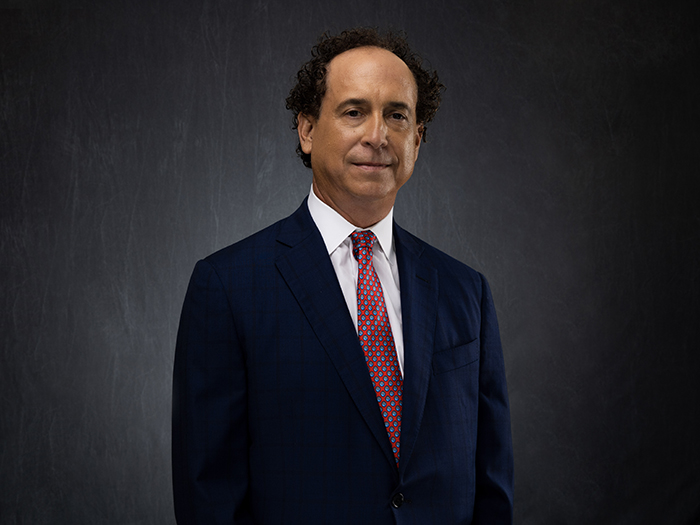Predicting What Distribution, Underwriting and Claims Will Look Like in the 2030 Insurance Value Chain

In 2030, the world will look, feel and function in new ways. But how will the insurance value chain be affected by the new technology, ideas and regulations that will exist in seven years?
Innovation is happening at a faster pace than ever — and this speed could drive significant changes in the insurance ecosystem.
A revolutionary session at Insurtech Insights New York focused on what the future of the insurance value chain may look like in 2030.
Breaking down the topic into navigating three parts of the value chain, the panelists focused their comments on distribution, underwriting and claims.
Moderator Connor Love, partner at Lightspeed Venture Partners, was joined by industry experts with a wide range of experience. Andy Cohen, president at Snapsheet; Bruce Lucas, founder and CEO at Slide Insurance; Kyle Nakatsuji, founder and CEO at Clearcover; and Jennifer Hobbs, VP of data and analytics and lead data scientist at Zurich North America, provided their thoughts on navigating the P&C value chain of 2030, comparing and contrasting it to today’s marketplace.
Distribution Models of the Future Will Still Involve Agents
Looking ahead seven years into the future, the panel predicted distribution would not look all that much different from today’s ecosystem in some ways, while in others, we would find new advances.
“Distribution begins and ends with independent agents,” Lucas said. “Some aspects of insurance don’t need to be super tech-forward. Some are stoic, they work, and you can build a business around them. The workhorse in the industry is independent agents. They control the business. Growth will be stymied for companies that don’t embrace it.”
The idea of continued value being offered by agents seemed popular among the panel, even while the experts agreed that what worked seven years ago may not work now or seven years in the future.
Nakatsuji talked about creating curated value for the consumer, especially in a traditionally confusing industry like insurance. And this curated value can be created by an insurer or an independent agent.
“What works for the consumer is curated value. Insurance is opaque, an unfamiliar concept to most people — even most traditional lines,” he said. “This idea of being able to have someone or something curate for you what your needs are and how to take care of them is really important.”
The Underwriting Process of the Future Moves to Predict & Prevent
The panel agreed on the power of the future of underwriting. The opportunity for growth and change seems most ripe in this area of the value chain, due in large part to data and technological advancements.
“Because of data, we can offer insights we couldn’t seven years ago,” Hobbs explained. “The speed of AI allows us to uncover problems we didn’t know we had. It lets us move from react to predict and prevent. There is more data than there was before, but in order to turn data into value, it needs to be used and put in motion.”
Lucas agreed, saying: “Data is everything. If you don’t have mountains of data, you have nothing.”
Nakatsuji provided the counterpoint, explaining his company did not have access to the same vast amounts of data so they needed to approach underwriting differently.
“If you think about how auto insurance is priced and underwritten, there are distinct differences by line of business. We had to think about how to differentiate, to think about the process of risk selection more holistically and think about the underwriting process before even meeting the customer,” Nakatsuji said.
Cohen reinforced the idea of thinking about risk and insurance in a more holistic way, with consumers benefiting from the philosophy of “lifestyle risk”: “As we fast-forward seven years, the opportunity is on the underwriting side to preselect risk, reprice risk, update policies with things that matter and sign up for a more continuous lifestyle policy.”
The panel also discussed how advances in AI will transform the insurance value chain.
Cohen said, “Our thesis is that generative AI is going to be super transformational around policy. Whether it is automated or not depends on the experience the carrier and customer want.
“Having the infrastructure and operating model in claims to operationalize AI is what companies should focus on right now. Adjusters can help customers in times of need instead of keying information across various systems. We need operating model changes and new processes.”
The Claims Model of the Future
Claims is a significant opportunity area within the insurance value chain. And it could look very different in 2030 thanks to new resources, software and processes — and innovative insurers willing to embrace and drive change.
Hobbs described how this new technology will change the claims process, saying it will “make humans more efficient, more powerful, more responsive — get to information that took hours to find before so you can focus on the customer. It’s freeing up data and giving it to the end users so they can have those meaningful and valuable conversations.”
Automating basic processes, like data entry tasks, means claims adjusters have more time for customer-facing work, like explaining policy conditions, helping insureds with complex claims and investigating fraud red flags.
Assuming the Pareto principle applies in claims, automated processing can handle about 80% of claims or claims processes while the adjuster focuses their energy on the complicated or challenging 20%.
“On a claims front, personal lines, the last year and a half has been very challenging,” Cohen said.
“The pessimist in me sees incumbents going back to the way they used to do things. The optimist in me says seven years ago less than 1% of all auto claims were handled virtually, last year it was just under 30%, and-fast forward seven years, it will be close to 80%,” he added.
And while it is clear not every claim can be handled in the same way, streamlining the workflow to gain efficiencies that allow the adjuster to focus on helping the insured seems like a positive step forward. If that is what the insurance value chain of 2030 looks like, perhaps it leaves room for a shift in culture toward a true predict-and-prevent model of risk management. &











